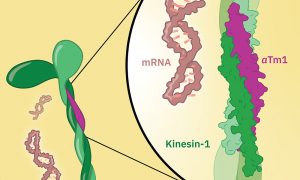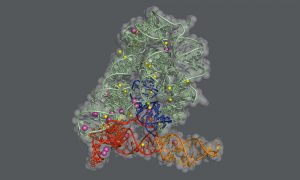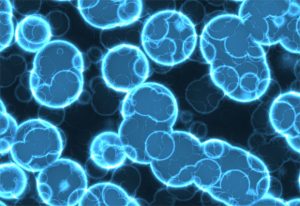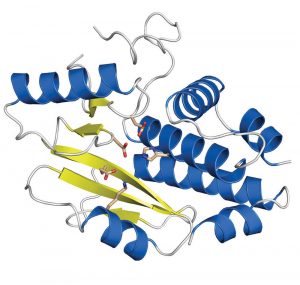No results found

We are EMBL: Simone Heber on RNA, bicycling, and Ironman
Simone Heber talks about studying RNA transport, organising the Bike Club at EMBL, and participating in the Ironman World Championship.
LAB MATTERSPEOPLE & PERSPECTIVES2024
lab-matterspeople-perspectives

‘X-ray vision’ for investigation of mRNA nanomedicines
EMBL Hamburg, Johannes Gutenberg University Mainz, Postnova Analytics GmbH, and BioNTech SE have developed a new method to quantitatively investigate sizes of nanoparticles containing mRNA. It may become an important part of regular characterisation of mRNA nanomedicines in the future.
SCIENCE & TECHNOLOGY2023
sciencescience-technology

EMBL’s second Kafatos Lecture this Friday
Elena Conti will discuss how cells control the life and death of mRNA molecules at the 2023 annual Kafatos Lecture on 20 October in Munich.
EMBL ANNOUNCEMENTS2023
alumniembl-announcements

mRNA nanomedicines scoop Nobel Prize in Physiology or Medicine
Pioneers of the mRNA nanomedicines technology receive 2023 Nobel Prize in Physiology or medicine. EMBL is pleased to have supported the development of the application of the mRNA nanomedicine technology through our long-standing collaboration with BioNTech, Johannes Gutenberg University Mainz and…
SCIENCE & TECHNOLOGY2023
sciencescience-technology

Deciding when to destroy mRNA
Elena Conti will discuss how cells control the life and death of mRNA molecules at the next annual Kafatos Lecture on 20 October in Munich.
SCIENCE & TECHNOLOGY2023
alumniscience-technology

A model of cooperation for transporting mRNA
EMBL scientists generate a high-resolution crystal structure of the Kinesin-1/aTm1 transport complex in the fruit fly.
SCIENCE & TECHNOLOGY2021
sciencescience-technology

From mRNA researcher to BioNTech manager
EMBL alumnus Pawel Masiewicz has transferred skills and experience gained at EMBL to oversee starting materials for mRNA vaccine development.
PEOPLE & PERSPECTIVES2021
alumnipeople-perspectives

EMBL scientists receive prestigious ERC Starting Grants
Maria Bernabeu and Wojciech Galej have each been awarded €1.5 million to research malaria and pre-mRNA splicing, respectively.
EMBL ANNOUNCEMENTSLAB MATTERS2020
embl-announcementslab-matters

Genetic cut and paste at atomic resolution
Researchers in the Marcia group at EMBL Grenoble and the De Vivo lab at the Italian Institute of Technology in Genoa have obtained some of the most detailed ever snapshots of the splicing process in systems known as group II self-splicing introns. The new insights will help scientists to develop…
SCIENCE & TECHNOLOGY2020
sciencescience-technology

New ways to look at protein-RNA networks
Researchers develop new method to analyse the entire protein-RNA network of the cell
SCIENCE & TECHNOLOGY2018
sciencescience-technology

New findings reveal how influenza virus hijacks human cells
Influenza is and remains a disease to reckon with. Seasonal epidemics around the world kill several hundred thousand people every year. In the light of looming pandemics if bird flu strains develop the ability to infect humans easily, new drugs and vaccines are desperately sought. Researchers at…
SCIENCE & TECHNOLOGY2009
sciencescience-technology
Getting wise to the influenza virus’ tricks
Influenza is currently a grave concern for governments and health organisations around the world. Now one of the tactics used by influenza virus to take over the machinery of infected cells has been laid bare by structural biologists at the EMBL, the joint Unit of Virus Host-Cell Interaction of…
SCIENCE & TECHNOLOGY2008
sciencescience-technology
Mechanism of microRNAs deciphered
Over 30% of our genes are under the control of small molecules called microRNAs. They prevent specific genes from being turned into protein and regulate many crucial processes like cell division and development, but how they do so has remained unclear. Now researchers from the European Molecular…
SCIENCE & TECHNOLOGY2007
sciencescience-technology
A double punch for female survival
Achieving equality between the sexes can be a challenge even for single cells. Since evolution began removing bits of male DNA to create the ‘Y’ chromosome, males have had a single copy of certain key genes on the X chromosome, whereas females have two. Normally this would lead females…
SCIENCE & TECHNOLOGY2005
sciencescience-technology